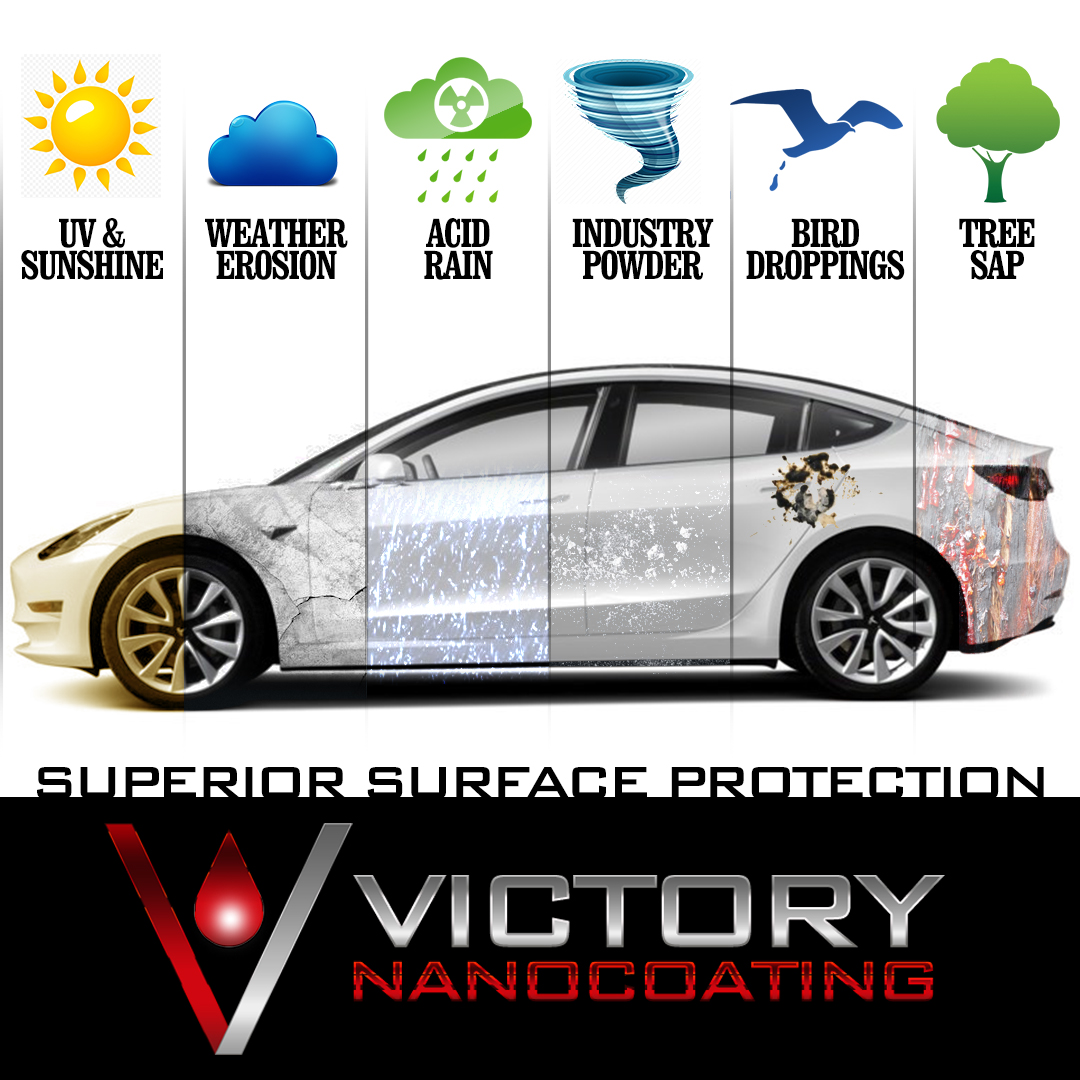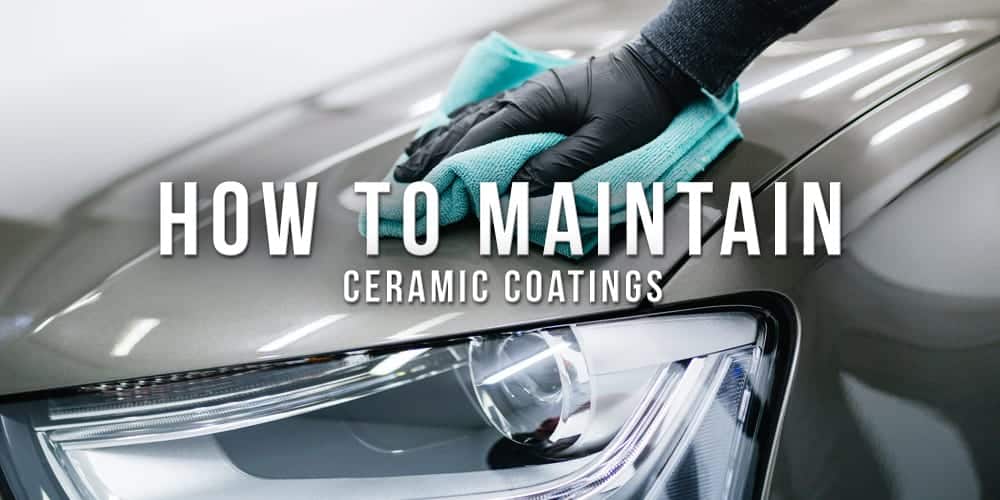The Step-by-Step Guide to Applying Final Touch Auto Works Ceramic Coatings Professionally
The Step-by-Step Guide to Applying Final Touch Auto Works Ceramic Coatings Professionally
Blog Article
The Ultimate Overview to Ceramic Coatings: Enhancing Your Vehicle's Complete and Durability
If you're looking to raise your cars and truck's look and security, ceramic layers could be the option you have actually been looking for. These innovative coatings bond with your car's paint, creating a resilient obstacle versus environmental damage. Exactly how do they pile up versus conventional wax? Recognizing the advantages and application process can make a significant difference in your auto treatment regimen. Allow's explore what makes ceramic coatings a rewarding investment for your vehicle.
What Are Ceramic Coatings?
Ceramic coatings are innovative safety layers that improve your vehicle's exterior. They're made from a liquid polymer that chemically bonds with your car's paint, creating a sturdy guard. Unlike conventional wax or sealers, which wear away over time, ceramic layers supply long-lasting defense versus environmental contaminants like UV rays, dirt, and chemicals.When you use a ceramic finishing, you're spending in an obstacle that pushes back water, making it much easier to cleanse your cars and truck and maintaining it looking more recent for longer. This innovation helps protect the stability of your paint, minimizing the risk of scrapes and oxidation.Ceramic coatings come in different solutions, each designed to deal with various needs and preferences. You can pick a DIY kit or select professional application, depending on your convenience level and spending plan. In general, ceramic finishes represent a sophisticated solution for maintaining your vehicle's visual allure and long life.
Advantages of Ceramic Coatings
When you spend in a ceramic coating, you disclose a series of advantages that exceed mere appearances. To start with, it gives phenomenal security against ecological impurities like dust, bird droppings, and UV rays, keeping your automobile's paint looking brand-new much longer. You'll discover that maintenance becomes simpler, as the hydrophobic properties create water and grime to slide off effortlessly. This indicates much less time invested cleaning and detailing your vehicle.Additionally, ceramic finishings can boost the glossiness of your automobile's finish, providing it that display room shine. They likewise use resistance to scrapes and swirl marks, which aids preserve your car's resale worth. With a ceramic covering, you're not simply protecting your investment; you're additionally enhancing its overall look and long life. Ultimately, this advanced modern technology guarantees your automobile attracts attention while delighting in long-term advantages that standard waxes simply can't match.
The Application Process: How to Apply Ceramic Coatings
Using a ceramic covering includes a number of essential actions to assure ideal results. First, thoroughly clean your car to remove any kind of dust, crud, or pollutants. This ensures the surface area is all set and tidy for the covering. Next off, decontaminate the paint using a clay bar to get rid of ingrained particles. Afterward, check the paint for flaws and brighten it to accomplish a smooth surface.Once your auto's surface is prepped, use the ceramic layer in tiny areas. Use an applicator pad to spread out the coating uniformly, complying with the maker's directions. Enable the layer to cure for the advised time, normally between one to 2 hours, depending on the product.Finally, stay clear of washing your cars and truck for a minimum of a week to let the finishing bond properly. Complying with these steps will certainly assist you attain a durable, high-gloss coating that secures your cars and truck for years ahead.

Comparing Ceramic Coatings to Standard Wax
After ensuring your cars and truck's surface area is flawlessly prepped with a ceramic finishing, it's time to ponder just how this modern-day solution compares to typical wax. Ceramic coatings offer a robust layer of security that lasts for years, while wax normally uses just a couple of weeks of sparkle. You'll discover that ceramic layers bond with your paint, producing a hydrophobic surface area that wards off water and dust, making maintenance easier.In comparison, conventional wax rests on top of the paint and calls for frequent reapplication. With ceramic coverings, you get exceptional scratch resistance and UV security, assisting to stop fading and oxidation. While the first financial investment for a ceramic finish is greater, the long-lasting benefits often outweigh the expenses. If you're looking for durability and enhanced gloss, ceramic coverings are a clever option over conventional wax.
Upkeep Tips for Your Ceramic Layered Vehicle
To keep your ceramic-coated lorry looking beautiful, regular upkeep is essential. Beginning with a mild clean utilizing a pH-balanced hair shampoo; prevent extreme detergents that can degrade the layer. Use a microfiber wash mitt to prevent scrapes and constantly wash completely to eliminate any type of soap residue.After cleaning, completely dry your auto with a soft microfiber towel to prevent water spots. Think about using a ceramic maintenance spray every few months to improve the finishing's hydrophobic properties and add an extra layer of protection.It's additionally important to prevent automated vehicle washes with unpleasant brushes, as they can damage the finishing. Rather, go with hand cleans or touchless clean choices. Additionally, on a regular basis examine your car for pollutants like tree sap or bird droppings and address them immediately to protect against etching. Following these tips will help maintain the sparkle and durability of your ceramic-coated lorry for years ahead.
Usual Myths About Ceramic Coatings
Despite the impressive benefits of ceramic coverings, a number of myths can develop complication for cars and truck proprietors. One common misconception is that ceramic coatings eliminate the need for maintenance. While they do offer enhanced protection, normal cleaning and care are still necessary to maintain that high-gloss finish.Another misconception is that these coverings are scratch-proof. While click to read they give a solid layer of my blog protection versus small scratches, they can't endure severe impacts or abrasive materials.Many additionally believe that ceramic layers will certainly make their cars and trucks immune to all pollutants. In truth, they drive away dirt and water yet will not prevent problems like bird droppings or tree sap from causing damages if left unattended.Lastly, some believe that using ceramic layers is a do it yourself task anyone can manage, but attaining a perfect application typically requires professional expertise to guarantee peak results.
Selecting the Right Porcelain Covering for Your Auto
How do you pick the best ceramic layer for your auto? Beginning by taking into consideration the degree of defense you require. If your car faces rough climate or frequent journey, select a premium coating that provides superior durability and resistance to scrapes, UV rays, and chemical stains.Next, consider the application method. Some coatings need specialist installment, while others are DIY-friendly. If you're experienced, a DIY product could save you money, but also for the very best outcomes, a specialist can guarantee proper application.Don' t fail to remember to examine the durability of the layer. Some last a couple of years, while others can protect for a decade or even more. Ultimately, check out reviews and testimonials to determine user fulfillment. By evaluating these elements, you'll discover a ceramic layer that not only enhances your cars and truck's look but likewise offers resilient security.
Often Asked Concerns
How Much Time Do Ceramic Coatings Last on Ordinary?
Ceramic finishings generally last anywhere from 2 to five years, depending on variables like application, maintenance, and ecological problems. You'll want to follow correct care routines to optimize their longevity and efficiency.
Can Ceramic Coatings Be Applied Over Paint Scratches?
You can not apply ceramic coatings over paint scratches efficiently. It's best to repair any kind of scratches initially, guaranteeing a smooth surface area - Final Touch Auto Works Ceramic Coatings. By doing this, the covering bonds appropriately and offers perfect defense for your lorry's surface
Are Ceramic Coatings Safe for All Auto Surface areas?
Ceramic layers are usually secure for the majority of vehicle surfaces, consisting of paint, glass, and wheels. However, it is image source critical to inspect details product standards, as some coverings could not be suitable for sure products or coatings.

Will Porcelain Coatings Protect Against UV Damage?

Can I Do Touch-Ups on Ceramic Covered Surface Areas?
You can do touch-ups on ceramic layered surfaces, however it's vital to use compatible items. Verify the location is clean and follow correct application strategies to preserve the finish's honesty and performance. Unlike traditional wax or sealants, which put on off over time, ceramic finishes provide durable security versus environmental pollutants like UV rays, dust, and chemicals.When you apply a ceramic finish, you're investing in an obstacle that fends off water, making it less complicated to clean your automobile and maintaining it looking newer for longer (Final Touch Auto Works Ceramic Coatings). Afterward, evaluate the paint for flaws and brighten it to achieve a smooth surface.Once your cars and truck's surface area is prepped, apply the ceramic finishing in tiny sections. Allow the finish to treat for the recommended time, commonly between one to two hours, depending on the product.Finally, stay clear of cleaning your auto for at least a week to let the covering bond properly. Think about using a ceramic maintenance spray every few months to improve the covering's hydrophobic properties and add an added layer of protection.It's additionally wise to prevent automatic auto washes with rough brushes, as they can harm the finishing. Ceramic layers are typically risk-free for most auto surface areas, consisting of paint, glass, and wheels
Report this page